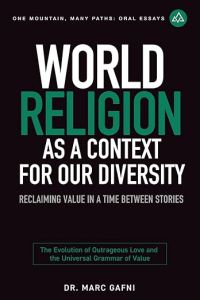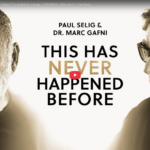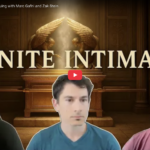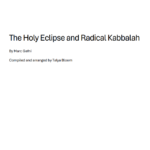New World Conditions Catalyze the Evolution of a New World Spirituality – Part 2 by Marc Gafni
by Marc Gafni
The Evolutionary Context of World Spirituality 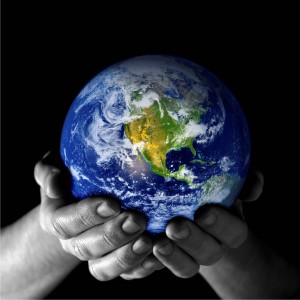
Why? Because the Perennialists made one huge mistake. They intentionally ignored the evolutionary context. Schoun and Smith not only ignore it, they identified and rejected evolution as being the enemy of eternity. In their understandable desire to locate modern man in the ground of eternity, they intuitively viewed the dynamic emergence of evolution as a threat. This is a huge mistake. Evolution and Eternity are not enemies. Rather, Evolution is the nature of Eternity. Or at least evolution, or what Alfred North Whitehead called Becoming, is One taste of Eternity. Evolution is a mechanism of eternity’s emergent properties as eternity chooses to manifest in the world of time. Evolution is no less than the chosen mechanism of the mystery.
We now realize that everything is evolving, including consciousness itself.
In the language of Kuk, heavily influenced by the old evolutionary teachings of Luria and the Zohar:
The theory of evolution, which is presently conquering the world, is aligned with the most profound secrets of Spirit, more than with any other philosophical theories.
Evolution, which proceeds on an ascending trajectory, provides an optimistic base for the world, for how is it possible to despair when one sees that everything is evolving and ascending?
And when we penetrate the very center of the principle of ascending evolution, we discover that it is the divine principle, which is enlightened with absolute clarity. For it is Infinity in realization which realized itself through bringing infinity from infinite potentiality to infinite actuality.
Evolution enlightens all dimensions of reality, all of God’s manifestations.
All of reality evolves and ascends, as is evident in its parts, and this ascension is general as well as particular.
It rises to the highest peaks of absolute good.
What we now realize, as Kuk, Bergson, Aurobindo, De-Chardin, Gebser and so many others have shown, is that “all dimensions of reality” are evolving. We realize that consciousness itself is developing. Evolution is not the enemy of the mystery. Evolution is the mechanism of the mystery. This is the great paradox and lived koan of evolution and eternity.
The enlightened realization of the Kabbalists, who realized that consciousness itself evolves through us, dramatically influenced Fichte, Schelling, and the other German Idealists who are the modern founders of Evolutionary Spirituality.
But what was an esoteric realization held by an elite few has itself dramatically evolved. We now realize that evolution takes place in the biosphere itself. And the evolution taking place in the biosphere is an expression of the evolution, which is the very nature of all levels of reality. What Kuk understood, we are now able to ground in empirical cross-cultural research—called structuralism—which reveals the unfolding stages of consciousness through human history. We are able today to identify distinct levels in the evolution of Consciousness. as revealed by the cross-cultural research of contemporary developmental theorists including Jean Gebser, Clare Graves, Jean Piaget, Jane Loevinger, Suzanne Cook-Greuter and many more.
Religion and Spirituality are expressions of consciousness. If consciousness is evolving in distinct stages, then it is obvious and readily apparent that religion must be evolving in those very same stages. So it is clear as day that when we say “religion” we need to identify what kind of religion we are talking about. Are we talking about what Jean Gebser called Mythic Religion, or about Rational Religion, Pluralistic Religion, or Integral Religion.
Each one of these levels, or stages of development—mythic, rational, pluralistic, and Integral—refracts the core and profound insights of religion through its own particular level of consciousness. Each one transcends and includes the precious level. Okay, you ask, what does that mean in practical terms?
For the religions at all of these levels, for example, kindness is a core value. There is a clear spiritual obligation to kindness that is expressed at all four of these evolutionary levels of consciousness. But what kindness means differs substantively at each level. The simplest expression of this distinction is that at the mythic level of religion the primary obligation to kindness is limited to those of ones faith community. And while it may be extended to others through this or that method of hermeneutic expansion, the core community of concern remains the particular faith community of which one is a part. A second example: In a wonderfully made home movie on ancient china, which was ruled by mythic religious consciousness, the hero is an enlightened Chinese patriarch who is in a deep love relationship with his consort. At some point in the plot his consort disobeys him. He beats her with a cane, all the while shedding tears but realizing that this is what he must do. When he finishes, she thanks him for his “kindness.” At the mythic level of consciousness, the violation of masculine authority by the feminine was understood to require beating as an appropriate response. And such beating was understood to be an expression of kindness.
At the level of rational religion—when the consciousness of Western Enlightenment comes on line, kindness extends beyond the particular faith community. And because the first wave of proto-feminism began to show its head as one of the expressions of deepening human rights, the notion that a man would beat his wife for disobedience, as an act of kindness, slowly becomes not only absurd but also illegal and actionable. However, at the level of rational religion, sharp distinctions between the genders remain in place, and women are still not equal in any sense. Kindness to the feminine does not include, for example, equal pay for equal time or a host of other basic rights.
At the pluralistic level of religious consciousness kindness extends both beyond narrow faith communities and transcends gender distinctions. Kindness itself has evolved. However, the pluralistic level of religion, to a large extent, lost the ability to make discernments and penetrating judgments to reflect natural hierarchies between values, lifestyles, moral choices, or forms of government. All forms of rankings were considered, by definition, unkind or worse. This resulted in a liberal abandonment of values. The tragic upshot is that the religious right per se hijacked values. Moreover, the sense of spiritual and religious obligation to kindness, and to specific sets of actions that support kindness, was undermined initially in rational religion, and most dramatically in pluralistic levels of spirituality and consciousness. The result again is that self-help and community-based welfare organizations, as part and parcel of an organized community, abound on the religious right, which holds a premodern, largely mythic view of religion. These are almost entirely absent in the fragmented and diffuse community structures of the liberal left, which is rooted, if at all, in rational or pluralistic modes of religion.
It is only at the Integral level of consciousness that kindness evolves once again in a way, which transcends both gender discrimination, as well as the limitations of ethnocentric mythic religion. Moreover, at the Integral level of consciousness the obligation to kindness, both as a general virtue and as it relates to specific acts of kindness, is reclaimed. Indeed it is only at the Integral level of consciousness that a significant post-mythic and post-rational notion of genuine obligation is reclaimed at all.
World Spirituality Transcends and Includes the Perennial Philosophy
Said slightly differently, World Spirituality = Perennial Philosophy in an Evolutionary Context, with all that this implies. To spell out all of the implications would take more space than we have available in this communication. But let us at least make some key points on this utterly essential issue.
It might be fairly stated as follows. To suggest that World Spirituality consists of the perennial philosophy—that is to say of the shared truths of the great traditions—is to be almost certain that World Spirituality will be rejected as an evolutionary emergent.
And this is so for two very different reasons.
1. First, if this is what World Spirituality is, the traditions themselves will roundly reject it. If the pre-requisite for an emergent World Spirituality is the abandonment of the traditions in the form of reducing their distinctions to a set of common shared truths, then the traditions themselves will be the fiercest opponents of World Spirituality. Again, for two reasons. First, no one likes to be put out of business. Second and more profoundly, the greatness of the traditions often lies in each ones unique insight, and not in the common truths they share with the other great religions.
Often the perennialist writers and the interfaith proponents of religious perennialism posit as their essential distinction the difference between the depth structure and surface structures of a religion. The argument goes somewhat as follows. The religions differ only in their surface structures, which are determined by the contextual factors of culture and language. Surface structures might include rituals, laws, and specific forms of worship. Underneath, however, are said to be depth structures, which the religions share in common. Depth structures might include the core worldview of the religion, as well as its ethical and mystical core. This argument is absolutely true, but partial. There are highly important depth structures that are shared in common to some significant extent both by the mystical and ethical strains of virtually every great religion. This is true. And the gathering of the shared depth structures of the religions was one of the great spiritual projects of the latter half of the twentieth century. Writers such as Fritz Schuhon, cited above, and those influenced by him, including Aldoxus Huxely, William Stoddard, Gerard Heard, and many others put forth the core shared tenets of the perennial philosophy of religions.
However, and this is a huge however, the differences between the religions are not only rooted in the surface structures of the religions. It is more accurate to say that the religions contain surface structures, on the one hand, and two distinct forms of depth structures, on the other hand. There are, for sure, the depth structures that are shared by all the religions to which the perennialists correctly pointed. However, there are also the depth structures that are singular and distinctly rooted in the deepest well of revelation and contemplative insight that nourishes and sustains the tradition. The distinction between these insights might well be termed the Unique Self of every religion. Unique Self = True Self, which is enlightened consciousness, + perspective, which is the irreducibly unique perspective of every significant culture.
Buddhism, for example, made huge contributions in understanding and training mind states. Talmudic Judaism made a huge contribution to ethics and social activism in the form of Tikkun Olam, the responsibility to heal and repair the world based on the infinite dignity of every unique self. Christianity made a huge contribution to the evolution and propagation of the biblical teachings on forgiveness. While each of these traditions dealt with significant depth in all of these three areas, it is fair to say that each of these religions was also a specialist, with a highly evolved and unique area of excellence.
Each great tradition has its own radically unique worldview, its own distinct medicine, and its own radically wondrous particular contribution to the music of spirit. It would be precisely accurate to say that each tradition is an instrument in the symphony of spirit. It is not only true that all the instruments produce music much like all the religions intuit and enact spirit. It is also true that each instruments produces utterly unique music just as each religion enacts utterly distinct forms of spiritual expression. It would be not only ignorance of the most base kind, but tragic, to reduce all the traditions to their shared truths. And the key opponents of this reductionist dishonoring of the religions would be none other then the religions themselves. This cannot be the goal of an evolutionary World Spirituality.
2. But to make the common truths of the great traditions the exclusive or even primary content of World Spirituality would be a monumental mistake for a second reason as well. It is absolutely true that the distinction between the surface structures of the religion and the shared depth structures of every tradition is a crucial insight in the evolution of consciousness and a key part of World Spirituality. This by itself however is woefully insufficient as the core of World Spirituality. For essentially what that would mean is that World Spirituality is the shared truths of the premodern traditions. In this reading World Spirituality itself would be a regressive movement. It would be regressive because it would suggest that we be guided by a spirituality rooted in the common insights of the of the premodern traditions[1]. That would take us back before modernity and before premodernity, which is exactly where we do not want to go.
Now do not misunderstand this point. The premodern traditions of Buddhism, Christianity, Judaism, Hinduism and more are wildly deep on many levels. The premodern traditions are radically profound at a level of interior understanding, which is most likely beyond anything we know today in our interior reaches. The radical inner focus on spirit in the premodern age as well as, some would say, the receptivity to the graces of revelation, yielded a depth of interior vision and knowing which is virtually beyond imagination.
At this same time the mainstream of all these traditions remained premodern in many essential ways which includes ethnocentricity, various forms of the marginalization of the feminine, a lack of historical consciousness, a profound disparity between the elite and the common person, an underdeveloped sense of human rights and much more. Each system at its core thought that its truth was primary, if not exclusive, and that in time history would validate its truth claim as the only authentic truth claim. And it is precisely that form of premodern religion that is once again sweeping the globe with disastrous results, as evidenced in the meteoric rise of fundamentalisms world over.
So to develop a World Spirituality, which shares the best of the pre-modern traditions while a correct evolutionary step in the right direction is certainly not the goal of an emergent and evolving world spirituality.
Rather we want a world Spirituality that shared the best of premodern, modern, and post modern insight. That would be an enormous leap in the evolution of consciousness. Let’s bring on board in World Spirituality, the deepest insights of all the great traditions including all of the great modern and postmodern traditions. This would include the best insights of psychology and psychoanalysis not least of which would recognize and actively engaging what Freud called the unconscious and Jung called the shadow. It would also include fantastic advances in family systems, economics, law, the healing arts, negotiation theory and conflict resolution as well as the best insights of systems and chaos theory. It would naturally embrace all of the best insights of modern science. It would include critical advances in health care, forms of governances, and human rights. It would include the leading edge understandings in the postmodern disciplines of hermeneutics, phenomenology, metrics and developmental thought.
A World Spirituality of this kind is urgently needed today to heal the fragmentation that lies at the very core of the world’s heart. It is only this kind of leading edge evolutionary emergent, which will have a wide enough embrace to catalyze a shared world commons. It is only from the space of shared world commons that we can write a new source code of human culture rooted in ever-higher levels of mutuality, recognition, union and embrace. It is only such a World Spirituality rooted in such a source code, which will be powerful enough to catalyze the evolution of love. It is only through the evolution of love, which is the evolution of love, which is the evolution of God that we will be able to inspire and write a new Cosmic Scroll. It is only in a new Cosmic Scroll that all the great religions and all the great systems of knowing and doing will have a place and will therefore no longer seek to usurp the place of an other. It is only in the context of such a Cosmic Scroll that every unique human being, will have a dignified, honored and beloved place and peace will ripple across the globe.
[1] Ken Wilber and I just has an awesome and spirited discussion about this precise point, a few days ago as we were engaging in one of a series of regular private dialogues which humbly and tentatively seek to lay the foundation of an emergent World Spirituality. All of the insights that emerge from these dialogues are evolving a vision of a World Spirituality based on Integral Principles. Ken is both a co-catalyst and active leading partner as well as inspiration and in the emergence of this movement and we are currently preparing a book to formally outline the theoretical underpinning of a World Spirituality based on Integral principles.
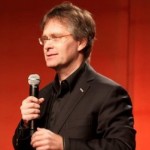 Dr. Marc Gafni holds his doctorate from Oxford University and has direct lineage in Kabbalah. He is a Rabbi, spiritual artist, teacher, and a leading visionary in the emerging World Spirituality movement. He is a co-founder of iEvolve: The Center for World Spirituality, a scholar at the Integral Institute, and the director of the Integral Spiritual Experience, as well as a lecturer at John F. Kennedy University. The author of seven books, including the national bestseller Soul Prints and Mystery of Love, Gafni’s teaching is marked by a deep transmission of open heart, love and leading edge provocative wisdom. Gafni is considered by many to be a visionary voice in the founding of a new World Spirituality and one of the great mind/heart teachers of the generation.
Dr. Marc Gafni holds his doctorate from Oxford University and has direct lineage in Kabbalah. He is a Rabbi, spiritual artist, teacher, and a leading visionary in the emerging World Spirituality movement. He is a co-founder of iEvolve: The Center for World Spirituality, a scholar at the Integral Institute, and the director of the Integral Spiritual Experience, as well as a lecturer at John F. Kennedy University. The author of seven books, including the national bestseller Soul Prints and Mystery of Love, Gafni’s teaching is marked by a deep transmission of open heart, love and leading edge provocative wisdom. Gafni is considered by many to be a visionary voice in the founding of a new World Spirituality and one of the great mind/heart teachers of the generation.





